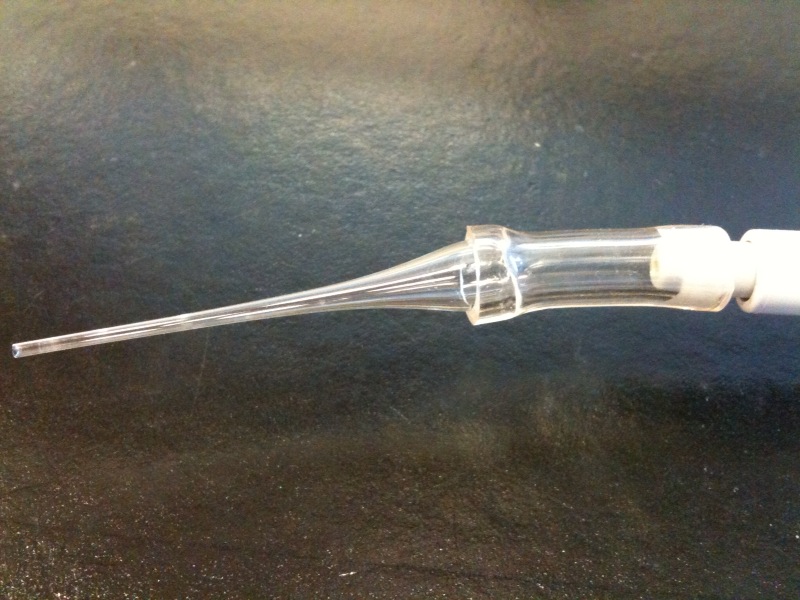Although standard C. elegans husbandry techniques involve manipulating worms on solid media using platinum wire, many key protocols require transferring nematodes between different solutions. Examples include any technique that requires fixing worms (DAPI staining etc), making lysates for biochemical analysis, transferring worms onto agarose pads on slides for microscopy and culturing worms in liquid food media, e.g. for dietary restriction studies. The easiest method to move worms between liquids is to pipette them using a standard P200 pipette, yet this raises the issue of losing worms as they adhere to the plastic when inside disposable pipette tips. This fundamental problem becomes critical when using low sample sizes of C. elegans and using low adherence disposable tips does not alleviate it.
We utilize the non-stick properties of glass Pasteur pipettes to get around this problem. Cut the pipette using a diamond glass-cutter (available at any hardware store) to etch around the Pasteur pipette about 5cm from the tip, corresponding to about 1-2cm above where the circumference reaches its maximum. After etching around the pipette completely, carefully snap the pipette along the scratch line whilst holding it between wads of paper towels being careful not to damage the fragile tip end. This glass pipette tip can then be easily attached to any standard molecular biology P200 using a short (3-4 cm) piece of rubber tubing that must form a tight seal around the glass tip and the base of the pipette (see Figure). Worms can now easily be pipetted using the glass tip in anywhere from 20-150 µl of liquid with little or no loss. Glass tips can be kept sterile in 70% ethanol, which can also be taken up into the tip, expelled and the tip flamed between different treatments etc. We use these tips as standard for dietary restriction life span assays (Mair et al, 2009) and have found them to decrease the time taken to carry out these studies by half or more.
Articles submitted to the Worm Breeder's Gazette should not be cited in bibliographies. Material contained here should be treated as personal communication and cited as such only with the consent of the author.


Leave a Reply
You must be logged in to post a comment.